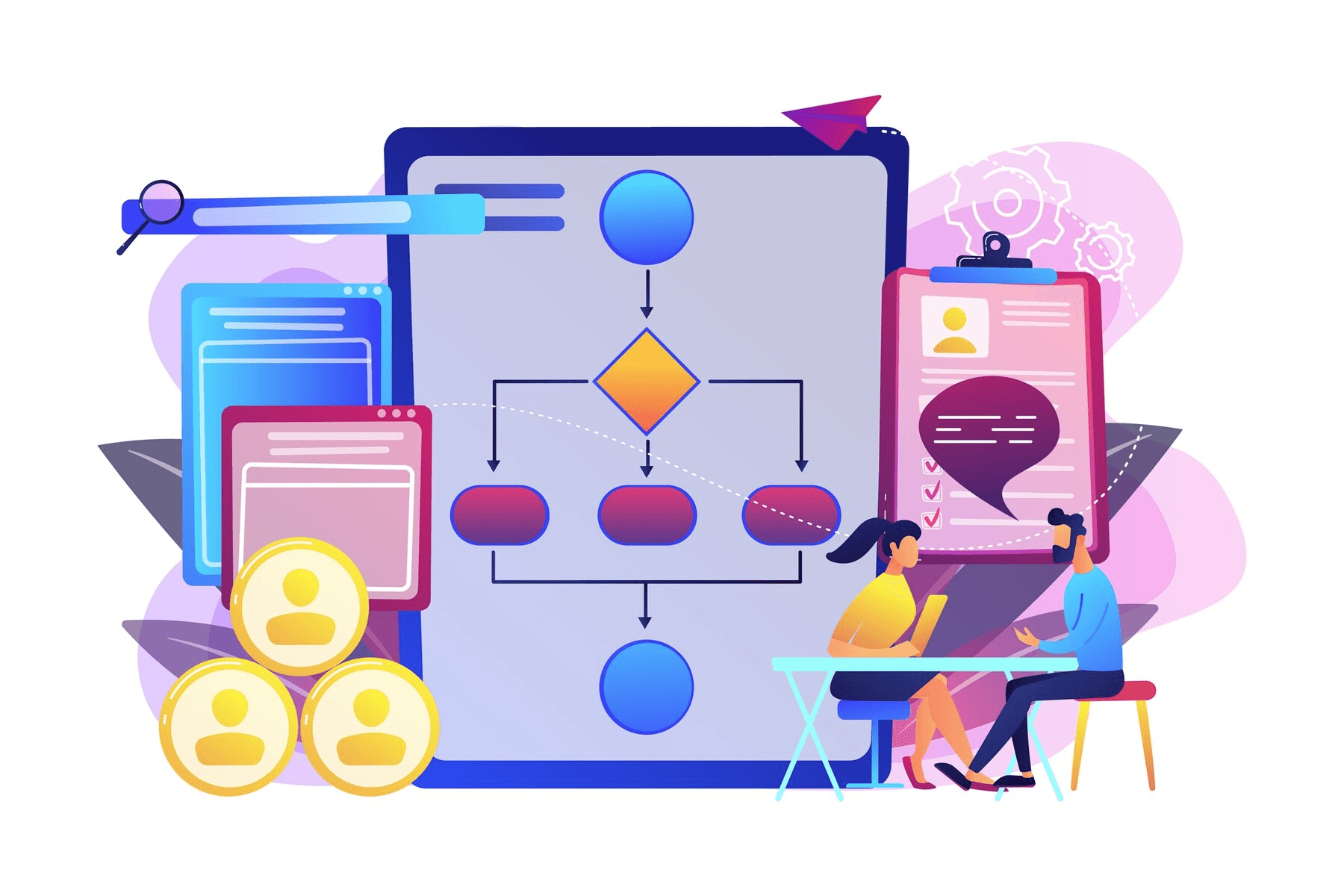In today’s fast-moving work environment, managing project charters with precision is more crucial than ever. For smaller teams or freelancers without the support of a dedicated project manager, the task often feels like navigating uncharted waters.
Yet, the foundation of successful project management lies in a well-defined project charter—one that balances clarity with flexibility. This document has the potential to align objectives, outline the scope, and manage risks, but only if it is crafted with careful thought.
How can a project charter serve as a reliable guide while adapting to the needs of every team member and resource constraint? The answer may not be as straightforward as it seems.
Identifying Common Challenges in Project Charter Management
The absence of a formal project management role leads to a fundamental challenge in managing project charters. Without a project manager to guide the team, smaller teams and freelancers often face difficulties in maintaining clarity.
A significant challenge is aligning the project goals with day-to-day activities. When team members lack guidance, the focus shifts and the project’s core objectives risk getting lost. The result is a project that veers off track, failing to meet key milestones and deliverables.
Additionally, teams often fail to document key assumptions, risks, and constraints, which makes the project vulnerable to surprises. Without a project manager overseeing the charter’s evolution, it is easy for miscommunications to occur, and assumptions to go unchecked.
As a result, project charters often remain static, even as the project itself faces changes. This lack of dynamic oversight can lead to scope creep, unanticipated delays, and missed opportunities, causing the project to suffer.
The Key Elements of an Effective Project Charter
An effective project charter serves as the foundational document that defines the direction and scope of the project. For smaller teams, this charter must encapsulate all the project’s goals, objectives, scope, stakeholders, risks, and assumptions.
Defining the project’s vision at the outset ensures that everyone involved knows exactly what they are working toward. Without this clarity, the team risks losing focus, particularly when working under tight deadlines or juggling multiple responsibilities.
Further, the project charter must include a comprehensive risk management plan. Identifying potential risks and outlining mitigation strategies early on helps preempt issues that could derail the project later.
Without a clear understanding of risks, even well-defined goals can become unachievable due to unforeseen obstacles. By documenting potential risks, constraints, and challenges, a team can better navigate the complexities of the project and make informed decisions when deviations occur.
Simplifying Project Charters for Small Teams
Managing a project charter for small teams or freelancers demands a minimalist approach. With limited resources and time, creating an overcomplicated charter can detract from its purpose. A detailed, multi-page charter may overwhelm the team, especially when the focus should be on results.
To avoid this, break down the charter into the most critical components: clear goals, deliverables, and resources. These elements provide the structure necessary to keep the project focused while being flexible enough to accommodate changes.
Moreover, small teams should structure the project charter to serve as a living document. Unlike rigid project plans, which can quickly become obsolete, a living document is flexible and can evolve as the project progresses.
Regular updates to the charter based on project needs help maintain alignment across the team, ensuring that everyone remains focused on the most important aspects of the project. This approach reduces friction and promotes effective collaboration, as team members can quickly adapt to changes without the weight of an overly detailed framework.
Aligning Goals and Objectives: Ensuring Team Focus
A project’s success hinges on the team’s ability to align around a common set of objectives. In smaller teams, where resources are stretched, it is easy to become distracted by daily tasks, which can ultimately hinder progress.
A project charter provides a roadmap that defines the primary goals, ensuring that each team member understands their role in achieving them. Setting clear, specific, and measurable goals within the charter ensures that everyone knows the target and what success looks like.
Furthermore, the goals outlined in the charter must be revisited regularly. The clarity of a project charter may diminish over time, particularly if new challenges or external pressures arise. Regular reviews of the goals allow the team to adjust and refocus, reinforcing their alignment and ensuring that no one is left behind.
These reviews also provide an opportunity to address any risks or roadblocks that may have surfaced, which further strengthens the project’s chances of success.
Handling Project Scope Effectively
Scope creep is a critical issue for projects, especially in environments where there is no formal project management oversight. A project charter helps keep the scope firmly under control by defining exactly what is included in the project and what is not.
This eliminates ambiguity and ensures that all stakeholders have the same understanding of the project’s boundaries. For small teams managing multiple projects, the ability to say “no” to additional work not aligned with the charter is essential.
Moreover, the charter should include a framework for managing scope changes. As the project progresses, there may be a need to modify the original scope to address unforeseen issues. However, any change to the scope must be carefully documented, ensuring that the impact on timelines, resources, and deliverables is understood.
This structured approach to scope management helps prevent the project from expanding beyond its original parameters, keeping it on course and within budget.
Documenting Assumptions and Constraints to Prevent Misunderstandings
Assumptions and constraints are often overlooked when creating a project charter, yet their impact can be significant. Assumptions, such as the availability of resources or timely approvals from external stakeholders, shape the project’s execution.
By documenting these assumptions upfront, the team ensures that everyone is on the same page and prepared for any potential issues that arise. For example, assuming a resource will be available throughout the project without documenting this creates uncertainty.
When that resource becomes unavailable, the project is at risk of stalling.
Constraints, whether related to budget, time, or resources, must also be clearly outlined. These limitations affect decision-making throughout the project’s lifecycle. Without explicit documentation, assumptions and constraints risk being overlooked, leading to misaligned expectations.
As such, the project charter serves as a critical tool for setting realistic expectations and reducing the likelihood of misunderstandings.
Managing Change Without a Dedicated Project Manager
In environments where no project manager oversees the day-to-day operations, change management becomes even more critical. A project charter includes a clear change management plan, which is essential for maintaining control over modifications that could impact the project’s goals.
This plan should specify how changes will be proposed, evaluated, and approved. Without such a framework, teams may end up responding to changes reactively, leading to confusion and inefficiencies.
Additionally, the change management plan within the project charter ensures that all stakeholders are on board with changes before they are implemented. This is particularly crucial when external collaborators or clients are involved.
By including communication protocols and ensuring that changes are well-documented, the charter becomes a critical reference point for managing changes while maintaining the integrity of the original objectives.
Risk Identification and Mitigation for Smaller Teams
Risk management is often one of the most critical yet neglected aspects of project charters. Smaller teams, due to limited resources, must be proactive in identifying potential risks and planning for them accordingly.
The project charter should provide a comprehensive risk assessment that highlights potential challenges and suggests mitigation strategies. This proactive approach enables the team to respond to threats before they become issues that jeopardize the project’s success.
In addition to identifying risks, the project charter should also define how to monitor and address these risks throughout the project’s lifecycle. This ongoing evaluation process is vital for preventing small issues from escalating.
Whether it’s a delay in deliverables or unforeseen costs, having a clear strategy in place within the project charter ensures that risks are managed effectively, giving the team the flexibility to adapt as circumstances change.
Communicating Goals and Progress Without Overhead
Frequent and clear communication is critical in any project, but it becomes even more important when a team lacks a project manager to oversee daily activities. The project charter should include a communication plan that defines how progress will be tracked and reported.
It should specify the tools and methods for status updates and ensure that all team members understand their roles in the communication process. By establishing this framework from the outset, the team can avoid miscommunication and ensure that progress is transparent.
In smaller teams, this communication is often informal, but it is no less important. Regular check-ins and status reports within the charter help everyone stay aligned. Even without a project manager, this simple yet effective communication structure ensures that the project remains on course and that team members can address issues promptly when they arise.
Balancing Different Roles and Priorities Across Departments
Projects involving multiple departments or roles face the challenge of balancing competing priorities. In a small team or freelance environment, where team members often wear multiple hats, it is even more critical to establish a clear set of roles and responsibilities.
The project charter must outline these roles and ensure that each team member knows their specific tasks and deadlines. By defining clear responsibilities within the charter, teams avoid overlaps or gaps in work, which can cause delays and confusion.
Moreover, when multiple stakeholders are involved, their priorities may differ. The project charter acts as a tool for aligning everyone on a common set of goals, ensuring that each department or individual understands how their work contributes to the larger project.
This alignment fosters collaboration and prevents miscommunication between departments, keeping the project focused and efficient.
Adjusting the Project Charter to Align with Client Expectations
Managing a project charter in collaboration with clients requires an additional layer of flexibility. Client expectations often evolve throughout the project, and the project charter must reflect this dynamic nature.
It is crucial to build flexibility into the charter to accommodate feedback and adjustments. When clients request changes, they should be clearly documented in the charter, ensuring that all parties are aligned on the impact of those changes on scope, budget, and timeline.
Furthermore, involving clients early in the project chartering process helps prevent misalignment down the road. By discussing assumptions, constraints, and expectations from the outset, teams reduce the risk of scope creep or dissatisfaction later on.
This proactive approach ensures that client expectations remain in harmony with project objectives, fostering a more collaborative and productive relationship.
Preventing Scope Creep and Staying on Track
One of the most critical risks for small teams is scope creep, which occurs when the project expands beyond its original boundaries. Without the structure of a dedicated project manager, managing scope creep can become a significant issue.
The project charter acts as a safeguard by clearly defining the scope and what is included in the project. Any additions or changes to the scope must be formally documented and agreed upon, ensuring that they do not derail the project.
In addition, project charters should establish a framework for evaluating proposed changes to the scope. By setting up a clear process for scope adjustments and ensuring that all stakeholders are involved, teams prevent unchecked expansion.
This level of control ensures that the project remains on target, both in terms of deliverables and resources, despite external pressures.
Maintaining Flexibility in the Project Charter
While a well-defined project charter is essential, flexibility is just as important. The ability to adapt to changing circumstances without losing sight of the project’s goals is crucial, particularly in dynamic or uncertain environments.
A rigid project charter can become a constraint, stifling progress as the team works around it rather than with it. Therefore, the project charter should be treated as a dynamic tool, one that evolves in response to changing needs and conditions.
Regularly revisiting the project charter ensures that it stays relevant. Adjustments to timelines, deliverables, or resources should be documented and communicated, ensuring that the project remains aligned with the evolving situation. By maintaining this level of adaptability, teams enhance their ability to navigate challenges while staying focused on the ultimate goals.
Avoiding Common Mistakes in Project Charter Creation
Even seasoned teams can make mistakes when creating project charters. Common errors include failing to involve all stakeholders in the process, creating overly detailed charters that become unwieldy, or neglecting to update the charter as the project progresses. These mistakes can lead to misalignment and confusion, derailing the project before it has even begun.
To avoid these pitfalls, teams should focus on creating a charter that is both clear and flexible. Involve key stakeholders early in the process to ensure their expectations are captured. Keep the charter concise and relevant, focusing on the essentials.
Finally, maintain an iterative approach, regularly revisiting and adjusting the charter to reflect the current status of the project.
Incorporating Team and Stakeholder Feedback
A successful project charter is not a static document; it evolves with input from all parties involved. Feedback from team members and stakeholders is vital in ensuring that the project charter remains relevant and accurate.
Integrating this feedback allows the team to make necessary adjustments, ensuring that the charter remains aligned with the project’s goals and objectives.
Moreover, creating a feedback loop encourages collaboration and ensures that all perspectives are considered. By documenting and acting on feedback, teams can prevent misunderstandings and address concerns before they become larger issues, ensuring that the project stays on track.
Determining the Right Level of Detail for Small Teams
For smaller teams, there is no one-size-fits-all approach to project charters. The level of detail required depends on the scope and complexity of the project.
While larger teams may require a more comprehensive document to manage their projects, small teams need to focus on the most critical elements, providing enough structure to guide the project without overcomplicating it.
The project charter should serve as a practical tool, not a bureaucratic burden. When creating a project charter for a small team, focus on clarity and simplicity, ensuring that the essential elements—goals, scope, deliverables, risks, and roles—are clearly defined.
Managing Resources and Budget Constraints Efficiently
For smaller teams and freelancers, managing resources effectively is often a constant challenge. In the absence of a large team or abundant resources, a project charter becomes essential for clearly defining what is available and how it will be allocated. This ensures that resources are distributed according to priority and that nothing is overlooked.
A project charter should detail not only the human resources required but also the material and financial resources. Whether it’s budget, tools, or external vendors, understanding the resources at your disposal helps ensure the project moves forward smoothly without running into surprises that could derail progress.
Similarly, budget constraints must be addressed within the charter. By clearly documenting financial limitations, the team can make informed decisions about where to allocate funds, manage spending, and prioritize certain aspects of the project over others. A well-documented budget allows the team to monitor expenses throughout the project, helping prevent overspending or resource depletion.
Without this level of detail, a project risks mismanaging funds and facing financial shortfalls midway through, which can have significant implications for deliverables and timelines.
The Role of Communication in Project Charter Management
Communication is an essential pillar in managing a project charter effectively. For smaller teams, maintaining consistent and transparent communication ensures that everyone is aligned with the project’s goals, scope, and timelines.
It also reduces the risk of misunderstandings and ensures that any changes to the project charter are discussed and documented promptly. Within the project charter itself, there should be a communication plan that outlines how information will be shared among team members, stakeholders, and external parties.
The communication plan should include not only regular check-ins and updates but also specify the tools and channels that will be used for reporting progress, addressing issues, and making decisions. Regular communication keeps everyone accountable and on track, especially when challenges arise.
Additionally, documenting communication strategies within the project charter ensures that all team members have a shared understanding of how information will be exchanged and can follow the same processes for reporting and decision-making.
Evaluating Project Success Through the Charter
One of the most critical functions of a project charter is to provide a benchmark against which project success can be evaluated. The goals and deliverables defined in the charter set the stage for how success is measured throughout the project.
By establishing specific, measurable, attainable, relevant, and time-bound (SMART) goals, teams create a clear path for evaluating progress and assessing whether the project is on track. The project charter should also include success criteria—both quantitative and qualitative—that reflect the project’s desired outcomes.
As the project progresses, regular evaluations against these success criteria help identify potential gaps or areas requiring adjustment. If the project starts veering off course, it’s easier to make course corrections if there is a clear, documented reference point.
A well-structured project charter becomes an essential tool for monitoring ongoing progress and ensuring that the project meets its defined objectives and quality standards.
Leveraging Team Feedback to Refine the Project Charter
The project charter should not be a static document; it should evolve as the project develops. One of the most valuable assets in refining a project charter is team feedback. Involving team members in the charter creation and review process ensures that all perspectives are considered, which can uncover potential challenges or overlooked details.
Feedback provides an opportunity to spot issues early on, making the charter more accurate and relevant to the project’s real-time needs.
Additionally, fostering a culture of continuous feedback helps refine the project’s goals and strategies as the work progresses. Regularly reviewing the charter with input from the team helps ensure that the project remains on course and is better equipped to handle changes in scope, resource allocation, or external factors.
This collaborative approach ensures that the project charter remains a living document, flexible, and adaptable to the evolving needs of the team and the project.
Structuring the Project Charter for Long-Term Success
For projects that have a longer duration or are part of a broader program, structuring the project charter to ensure long-term success is vital. In such cases, the project charter must include not only the immediate goals but also a roadmap for future stages.
This includes setting milestones that align with future objectives and defining the trajectory of the project over its entire lifecycle. By doing so, teams avoid the pitfall of becoming too narrowly focused on short-term deliverables at the expense of long-term goals.
Furthermore, a comprehensive project charter for long-term projects should include provisions for phase reviews and adjustments. These reviews provide an opportunity to evaluate progress, recalibrate the project’s direction, and ensure that the project remains relevant to the business’s overarching goals.
Establishing these checkpoints within the charter helps prevent stagnation and ensures that the project remains aligned with the evolving priorities of the business.
Conclusion
Effectively managing a project charter is crucial for any project, no matter its size or complexity. For small teams or freelancers, the charter acts as a vital tool to define objectives, manage resources, and keep the project on track.
By focusing on essential elements like clear goals, risk management, scope control, and stakeholder communication, teams can navigate the challenges of project management without needing a dedicated project manager.
A well-crafted project charter goes beyond being a static document; it evolves with the project, ensuring alignment and continued success throughout the process.
For an affordable and effective solution, Pinrom offers project management tools at just $1 per user, empowering teams to execute with precision and simplicity.









